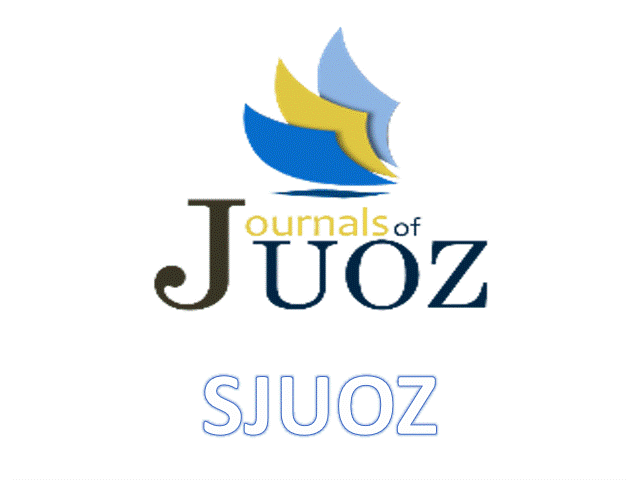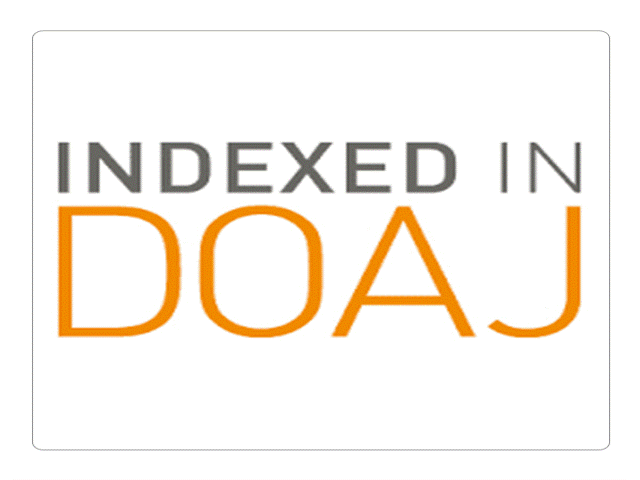The Influence of Waste Disposal Site on The Water and Soil Quality in Halabja Province, Kurdistan, Iraq
DOI:
https://doi.org/10.25271/2018.6.1.404Keywords:
Solid Waste Disposal, Potentially Toxic Elements, Water Quality IndexAbstract
Solid waste disposal could be a major environmental problem in in Kurdistan region of Iraq because it is not managed properly. The main purpose of this study was to assess the influence of long term solid waste disposal on water and soil physicochemical properties. Soil and water samples were collected in and around the solid waste disposal area. The samples were analyzed for physicochemical characteristics and potentially toxic elements using ICPMS. The results revealed that some water parameters analysed well below WHO and EU standards for drinking water. Therefore, the surface and ground water samples in this study are good for drinking purposes. However, the application of water quality index (WQI) suggests that the ground and surface water around the open dumpsite are marked as good and poor water in quality respectively. High concentration of Ca in all soil samples is expected because the regional geology is calcareous. The concentrations of PTEs were found in order of Mn> Fe> Ni> Zn> Cr> Cu> Pb> Se> Cd. Although relatively high concentrations of Ni and Cr were found at all sampling points, mean concentrations of trace elements in the soil samples in the studied area were all below the soil guideline values (SGV). Enrichment factors (EFs), calculated using typical carbonate bedrock geologies, confirmed that there was typically significant enrichment in trace elements above expected background concentrations. Whereas concentrations of toxic elements were within the ‘safe’ limits in the studied agricultural areas, care should be taken because prolonged disposing of wastes in the outskirt of the city could lead to PTE accumulation in surrounding water soils.
Downloads
References
Al Aswad, M., Hamdan, A. & Mohammed, M. (1978). The chemical status of drinking water in Sulaimaniyah city [Iraq]. Zanco. Series A. Pure and Applied Sciences.
Ali, L. (2002). Algal studies in sewage water within Erbil city. M. Sc.
Anikwe, M. A. N. & Nwobodo, K. C. A. (2002). Long term effect of municipal waste disposal on soil properties and productivity of sites used for urban agriculture in Abakaliki, Nigeria. Bioresource Technology, 83, 241-250.
Asomani-Boateng, R. & Murray, H. (1999). Reusing organic solid waste in urban farming in African cities: a challenge for urban planners. Olanrewaju BS (ed) Urban Agriculture in West Africa, Canada, p.210.
Bajaj, M., Eiche, E., Neumann, T., Winter, J. & Gallert, C. (2011). Hazardous concentrations of selenium in soil and groundwater in North-West India. Journal of Hazardous Materials, 189, 640-646.
Baldantoni, D., Leone, A., Iovieno, P., Morra, L., Zaccardelli, M. & Alfani, A. (2010). Total and available soil trace element concentrations in two Mediterranean agricultural systems treated with municipal waste compost or conventional mineral fertilizers. Chemosphere, 80, 1006-1013.
Bhuiyan, M. A. H., Islam, M. A., Dampare, S. B., Parvez, L. & Suzuki, S. (2010). Evaluation of hazardous metal pollution in irrigation and drinking water systems in the vicinity of a coal mine area of northwestern Bangladesh. Journal of Hazardous Materials, 179, 1065-1077.
Bocanegra, E., Massone, H., Martinez, D., Civit, E. & Farenga, M. (2001). Groundwater contamination: risk management and assessment for landfills in Mar del Plata, Argentina. Environmental Geology, 40, 732-741.
Bundela, P. S., Sharma, A., Pandey, A. K., Pandey, P. & Awasthi, A. K. (2012). Physicochemical analysis of ground water near municipal solid waste dumping sites in Jabalpur. International Journal of plant, animal and environmental sciences, 2, 217-222.
Carpenter, S. R., Caraco, N. F., Correll, D. L., Howarth, R. W., Sharpley, A. N. & Smith, V. H. (1998). Nonpoint pollution of surface waters with phosphorus and nitrogen. Ecological applications, 8, 559-568.
Carr, G. M. & Neary, J. P. (2008). Water quality for ecosystem and human health, UNEP/Earthprint.
Cude, C. G. (2001). Oregon water quality index a tool for evaluating water quality management effectiveness. JAWRA Journal of the American Water Resources Association, 37, 125-137.
Duhoki, M. S. (1997). classification of Some wells and Spring water in Duhok Governorate for Irrigation and Drinking Purposes. . Msc, University of Duhok.
Eaton, A., Clesceri, L. S., Rice, E. W., Greenberg, A. E. & Franson, M. (2005). APHA: standard methods for the examination of water and wastewater. Centennial Edition., APHA, AWWA, WEF, Washington, DC.
Elbag, M. A. (2006). Impact of Surrounding Land Uses on Surface Water Quality. Worcester Polytechnic Institute.
Environment Agency (2009). Using Soil Guideline Values. Science Report SC050021/SGV introduction. Bristol: Environmental Agency.
FAO/WHO (2001). Food additives and contaminants-joint FAO/WHO Food standards programme. ALINORM 01/12A: p.1- 289.
Galat, D., Lider, E., Vigg, S. & Robertson, S. (1981). Limnology of a large, deep, North American terminal lake, Pyramid Lake, Nevada, USA. Salt Lakes. Springer.
Gigliotti, G., Businelli, D. & Giusquiani, P. L. (1996). Trace metals uptake and distribution in corn plants grown on a 6-year urban waste compost amended soil. Agriculture, Ecosystems & Environment, 58, 199-206.
Golterman, H. & De Oude, N. (1991). Eutrophication of lakes, rivers and coastal seas. Water Pollution. Springer.
Gwenzy, W. & Munodo, R. (2008). long term impact of pasture irrigation with treated sewage effluent on nuitrient status of a sandy soil in zymbabaw. nutr, cycle. agroecosyst., 82, 197-207.
Hamasalih, N. Y. (2008). Limnological and Hygienic studies on tanjero river within Sulaymani city, Kurdistan region-Iraq Msc, University of Sulaymanyah.
Hynes, H. B. N. (1960). The biology of polluted waters. Liverpool University Press.
JAKOvljeviã, M. D., Kostiã, N. M. & Antiã - Mladenoviã, S. B. (2003). The Availability of Base Elements (CA, MG, NA, K) in Some Important SoilL Types in Seberia. Proceedings for Natural Sciences, 104, 11-21.
Karaca, A. (2004). Effect of organic wastes on the extractability of cadmium, copper, nickel, and zinc in soil. Geoderma, 122, 297-303.
Kaschl, A., Römheld, V. & Chen, Y. (2002). The influence of soluble organic matter from municipal solid waste compost on trace metal leaching in calcareous soils. Science of The Total Environment, 291, 45-57.
Khwakaram, A. I., Majid, S. N. & Hama, N. Y. (2012). Determination of water quality index (WQI) for Qalyasan stream in Sulaimani city/Kurdistan region of Iraq. International journal of plant, animal and environmental sciences, 2, 148-157.
Kunhikrishnan, A., Bolan, N. S., Müller, K., Laurenson, S., Naidu, R. & Kim, W.-I. (2012). The Influence of Wastewater Irrigation on the Transformation and Bioavailability of Heavy Metal(Loid)s in Soil. In: DONALD, L. S. (ed.) Advances in Agronomy. Academic Press.
Lente, I., Keraita, B., Drechsel, P., Ofosu-Anim, J. & Brimah, A. (2012). Risk Assessment of Heavy-Metal Contamination on Vegetables Grown in Long-Term Wastewater Irrigated Urban Farming Sites in Accra, Ghana. Water Quality Exposure and Health, 4, 179-186.
Meybeck, M., Kuusisto, E., Makela, A. & Malkki, E. (1996). A pratical guide to the design and implementation of fresh water quality studies and monitoring programme, E & FN Spon, Water quality Monitoring. J. Bartram, R. Balance, London, 9-34.
Moreno, R. M. J., Cala Rivero, V. & Jiménez Ballesta, R. (2005). Selenium Distribution in Topsoils and Plants of a Semi-arid Mediterranean Environment. Environmental Geochemistry and Health, 27, 513-519.
Muhammad, S., Shah, M. T. & Khan, S. (2011). Health risk assessment of heavy metals and their source apportionment in drinking water of Kohistan region, northern Pakistan. Microchemical Journal, 98, 334-343.
Mustafa, G., Kookana, R. S. & Singh, B. (2006). Desorption of cadmium from goethite: Effects of pH, temperature and aging. Chemosphere, 64, 856-865.
Mustafa, O. M. & Ahmad, H. S. (2008). Nitrate Pollution in Groundwater of Sulaimaniyah City, Kurdistan Region, NE Iraq. Iraqi Bulle-tin of Geology and Mining, 4, 73-82.
Nabi, Q. A. (2005). Limnological and bacteriological study in some wells within Erbil city Kurdistan region of Iraq. MSc, University of Salahaddin.
Nabulo, G., Black, C. R., Craigon, J. & Young, S. D. (2012). Does consumption of leafy vegetables grown in peri-urban agriculture pose a risk to human health? Environmental Pollution, 162, 389-398.
Nasir, A. (2007). Seasonal variation of the levels of petroleum hydrocarbons, Nickel and Vanadium metals in water, sediments, some Fishes and Shrimps from the Iraqi marine waters. Ph. D. thesis, University of Basrah.
Navarro, M. C., Pérez-Sirvent, C., Martínez-Sánchez, M. J., Vidal, J., Tovar, P. J. & Bech, J. (2008). Abandoned mine sites as a source of contamination by heavy metals: A case study in a semi-arid zone. Journal of Geochemical Exploration, 96, 183-193.
Nwankwoala, H. (2013). Evaluation of heavy metal in soils from Enyimba dumpsite in Aba, southeastern Nigeria using contamination factor and geo-accumulation index. Energy and Environment Research, 3, 125.
Ologundudu, A. (2009). Effects of household wastes on surface and underground waters. International Journal of Physical Sciences, 4, 22-29.
Organization, W. H. (2004). Guidelines for drinking-water quality, World Health Organization.
Pasquini, M. W. & Alexander, M. J. (2004). Chemical properties of urban waste ash produced by open burning on the Jos Plateau: implications for agriculture. Science of The Total Environment, 319, 225-240.
Patel, K. P., Pandya, R. R., Maliwal, G. L., Patel, K. C., Ramani, V. P. & George, V. (2004). Heavy Metal Content of Different Effluents and their Relative Availability in Soils Irrigated with Effluent Waters around Major Industrial Cities of Gujarat. Journal of the Indian Society of Soil Science, 52, 89-94.
Pescod, M. (1992). RE: Wastewater treatment and use in agriculture. Bull FAO 47 (125) Rome
Qadir, M., Ghafoor, A. & Murtaza, G. (2000). Cadmium Concentration in Vegetables Grown on Urban Soils Irrigated with Untreated Municipal Sewage. Environment, Development and Sustainability, 2, 13-21.
Qishlaqi, A., Moore, F., And Forghani, G. (2008). Impact of untreated wastewater irrigation on soils and crops in Shiraz suburban area, SW Iran. . Environmental Monitoring Assessment 141 257–273.
Rahman, S. H., Khanam, D., Adyel, T. M., Islam, M. S., Ahsan, M., A, & Akbor, M. A. (2012). Assessment of Heavy Metal Contamination of Agricultural Soil around Dhaka Export Processing Zone (DEPZ), Bangladesh: Implication of Seasonal Variation and Indices. Appl. Sci. , 2, 584-601.
Rajkumar, N., Subramani, T. & Elango, L. (2010). Groundwater contamination due to municipal solid waste disposal-A GIS based study in Erode city. International journal of environmental sciences, 1, 39.
Ramakrishnaiah, C., Sadashivaiah, C. & Ranganna, G. (2009). Assessment of water quality index for the groundwater in Tumkur Taluk, Karnataka State, India. Journal of Chemistry, 6, 523-530.
Raman, N. & Narayanan, D. S. (2008). Impact of solid waste effect on ground water and soil quality nearer to pallavaram solid waste landfill site in chennai. Rasayan J. Chem, 1, 828-836.
Rashid, K. A. (1993). Suction Characteristics of Sub grade Soils from North IRAQ. . Engineering and Technology 12 112-120.
Rashid, K. A. (2010). Environmental Implication of Tanjaro Waste Disposal site in the city of Sulaymanyah. PhD, University of Sulaymanyah.
Rattan, R. K., Datta, S. P., Chhonkar, P. K., Suribabu, K. & Singh, A. K. (2005). Long-term impact of irrigation with sewage effluents on heavy metal content in soils, crops and groundwater—a case study. Agriculture, Ecosystems & Environment, 109, 310-322.
Roca-Perez, L., Gil, C., Cervera, M. L., Gonzálvez, A., Ramos-Miras, J., Pons, V., Bech, J. & Boluda, R. (2010). Selenium and heavy metals content in some Mediterranean soils. Journal of Geochemical Exploration, 107, 110-116.
Roychowdhury, T., Uchino, T., Tokunaga, H. & Ando, M. (2002). Arsenic and other heavy metals in soils from an arsenic-affected area of West Bengal, India. Chemosphere, 49, 605-618.
Sawyer, C., Mccarty, P. & Parkin, G. (1978). Chemistry for environmental engineers. New York. Mc Graw-Hill Book Company.
Schwarzbauer, J., Heim, S., Brinker, S. & Littke, R. (2002). Occurrence and alteration of organic contaminants in seepage and leakage water from a waste deposit landfill. Water Research, 36, 2275-2287.
Shekha, Y. A. (2008). The effect of Arbel city waste waterDischarge on water quality of Greater Zab river, and the risks of Irrigation. PhD, university of Baghdad.
Singh, A., Sharma, R. K., Agrawal, M. & Marshall, F. M. (2010). Health risk assessment of heavy metals via dietary intake of foodstuffs from the wastewater irrigated site of a dry tropical area of India. Food and Chemical Toxicology, 48, 611-619.
Smith, S. R. (2009). A critical review of the bioavailability and impacts of heavy metals in municipal solid waste composts compared to sewage sludge. Environment International, 35, 142-156.
WHO (2011). Agents classified by the IARCmonographs.World Health Organization, International Agency for Research on Cancer (IARC).
WHO/EU (1983). WHO and EU drinking water quality guidelines for heavy metals and threshold values leading to crop damage.
WHO/FAO (2007). joint FAO/WHO food standard programme codex alimentarius commission13th session.Report of the thirty eight session of the codex committee on food hygiene, united states of america, ALINORM 07/30/13.
Xu, J., Wu, L., Chang, A. C. & Zhang, Y. (2010). Impact of long-term reclaimed wastewater irrigation on agricultural soils: A preliminary assessment. Journal of Hazardous Materials, 183, 780-786.
Downloads
Published
How to Cite
Issue
Section
License
Copyright (c) 2018 Karzan Mohammed, Salar S. Karim, Sherko A. Mohammed

This work is licensed under a Creative Commons Attribution 4.0 International License.
Authors who publish with this journal agree to the following terms:
- Authors retain copyright and grant the journal right of first publication with the work simultaneously licensed under a Creative Commons Attribution License [CC BY-NC-SA 4.0] that allows others to share the work with an acknowledgment of the work's authorship and initial publication in this journal.
- Authors are able to enter into separate, additional contractual arrangements for the non-exclusive distribution of the journal's published version of the work, with an acknowledgment of its initial publication in this journal.
- Authors are permitted and encouraged to post their work online.








